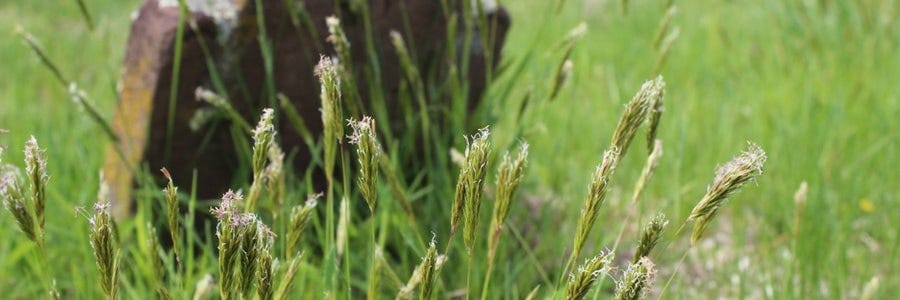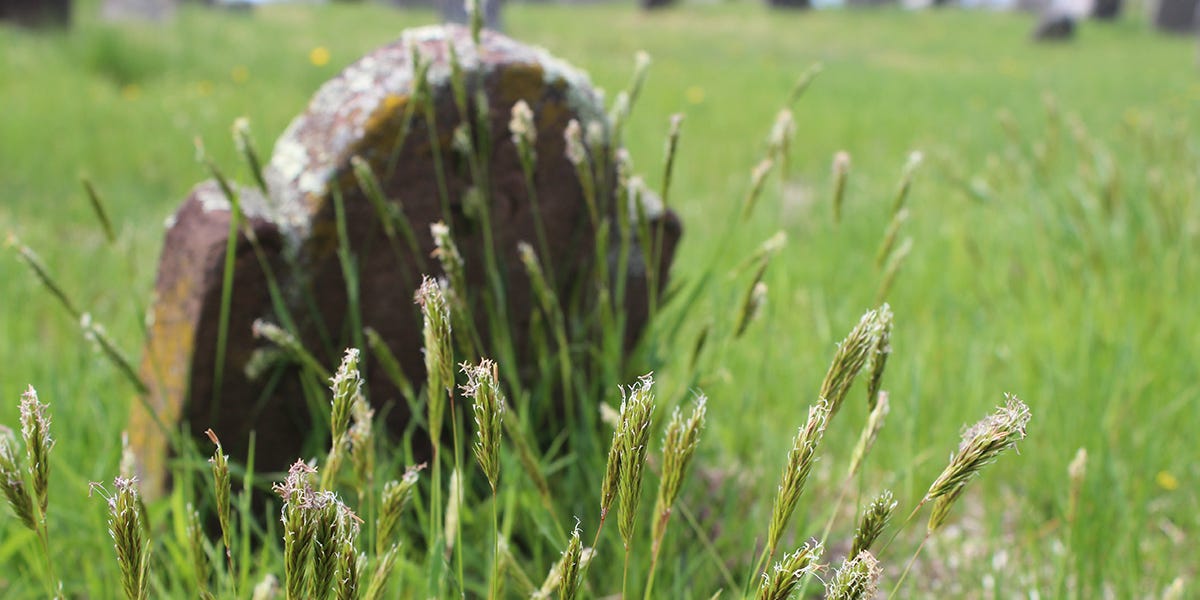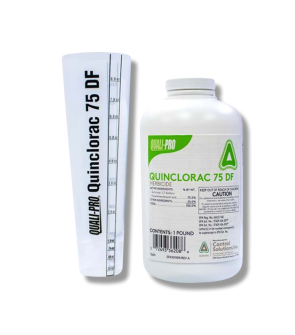Cemetery Weed Control
Most Effective Products
Cemetery Weed Control: How to Get Rid of Weeds In Cemeteries
Grass in cemeteries, especially ones that are older, are often not given the proper attention aside from occasional mowing. As a result, the grass is usually in poor quality, giving rise to weeds popping up and taking over. Weeds often grow out of control and can overrun an entire cemetery, if there is nothing done to put a stop to it.
Weeds growing in cemeteries usually creep up in areas that have poor conditions such as areas suffering from erosion, bare spots, compaction from foot traffic and other practices like poor fertility and dry soils. Other reasons for weeds in graveyards are steep slopes, too many areas of shade and poor maintenance such as not enough watering and fertilizing being performed.
Weeds in cemeteries not only ruin the aesthetics of the landscape but they can also ruin healthy grass by stealing nutrients away from it and turning the grass around a grave, brown or killing it entirely. Weeds in cemeteries are not just unattractive eyesores but they can be a costly maintenance issue, since you would have to mow more often to remove them, adding to labor costs.
Our lawn care experts have put together a detailed DIY guide to properly manage weeds on cemetery lands. By using our recommended products below and following our how-to instructions, you can successfully get rid of unwanted weeds quickly and save money doing it.
Identification
A weed in a cemetery is basically any plant that isn't the selected turfgrass for the land. There can be multiple different variants of weeds that may be present in a cemetery and they may be popping up for different reasons.
Before loading up with herbicides and treatment equipment, we first need to know is the type of Ornamental turfgrass we are trying to maintain. The type of turfgrass on the land will determine which types of herbicides can be used. Collect specimens or pictures of the unwanted weeds.
If you are struggling with a particular weed on your lawn, you can always refer to our broadleaf or grassy weed categories to find the offending weed and get specific instructions in how to eradicate the plant.
Inspection

Where to Inspect
Walk the property and take pictures of areas where unwanted weeds and grasses are found. Note any excess shade areas or environmental conditions that may contribute to weed infestation, such as low spots that hold water or bare spots where weeds will propagate. Also, note any ornamental plants and trees that could be harmed by herbicide applications.
What to look For It is important during the inspection phase to conduct a soil test to learn your soil fertility and pH to evaluate what type of fertilizer the soil may need and any adjustments to the pH that need to be made.
Cultural methods of control should be applied before resorting to chemical herbicides. When the cultural methods are not doing the trick in removing the problem weed, this is when it may be best to try chemical control.
Treatment
When weeds are very thick or continuously regrow, you may need to treat with chemical herbicides. Before using any herbicide, make sure to stay safe by putting on the appropriate PPE equipment for the job. This means gloves, goggles and long sleeve clothing at a bare minimum should be worn. We recommend using Quinclorac 75 DF Herbicide as it provides excellent control of any unwanted plant on a land no matter the species.
Step 1 - Spot Treat with Quinclorac 75 DF Herbicide

You have to spray very carefully when conducting herbicide treatment as broadcast treatments in a cemetery is usually not recommended. You may have to be so careful that rather than spraying, you use a brush and paint the herbicide to the plant.
The herbicide will then transport directly to the root system and will not affect the soil or nearby gravestones. Never use a weed killer next to a gravestone as it is absorbed by the stone and causes chemical damage.
Most Post-Emergent herbicide treatments should be done when weeds are immature but actively growing. Many annual weeds can be treated without adverse effects when the desired ornamental turf is in full dormancy. Its always best to treat weeds when the desired turf is not under drought, disease or insect stress.
Remember that most herbicides we have suggested are non-selective which means they are target specific. Drift or spray or movement after rain can significantly damage nearby vegetation and stones so be very careful when treating.
Step 2 - Follow Up When Necessary
Stubborn weeds may need repeat applications until they are totally eradicated. We recommend conducting weed control applications routinely when doing regular maintenance of a cemetery.
Prevention
An ounce of prevention is worth a pound of cure. Pre-Emergent herbicides will prevent many unwanted weeds if they are applied prior to seed germination. Products that prevent seed are best applied in late summer to early Fall and early Springtime to achieve best results. Many of these Pre-Emergent materials can be used safely in ornamental beds to prevents weeds for several months as well.
As mentioned in the intro, poor lawn conditions in the cemetery stem from a variety of factors like soil compaction, poor soil fertility, too much shade, and other environmental and maintenance circumstances.
By performing cultural control methods that address these problems (via using the proper fertilizer, reducing shade, aerating the soil, proper watering) you will have a lush, thick turf that will be better equipped at fighting and naturally choking out weeds.
Key Takeaways
- Cemetery weed control is not much different from typical weed control procedures with the exception of trying to protect gravestones and monuments from being impacted from treatment applications and mechanical removal methods.
- Many herbicides intended for weed control contains salts and are often acidic. If these products get on marble or limestone grave monument, it could significantly damage the stone.
- You can achieve successful weed control on cemetery properties by carefully applying treatment chemicals to the offending weeds and minimizing the chances of harming gravestones.












































































































































































































































































































































































































































































































































